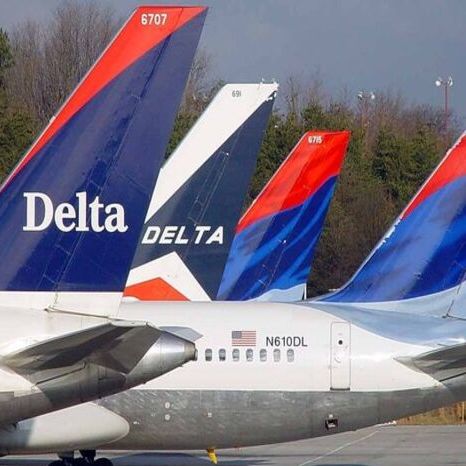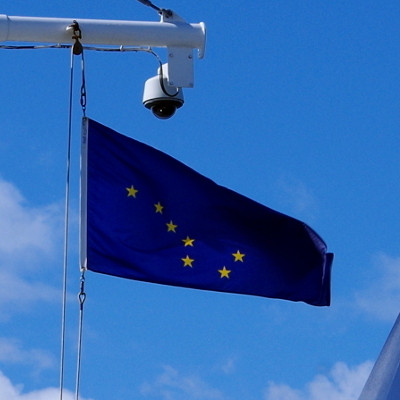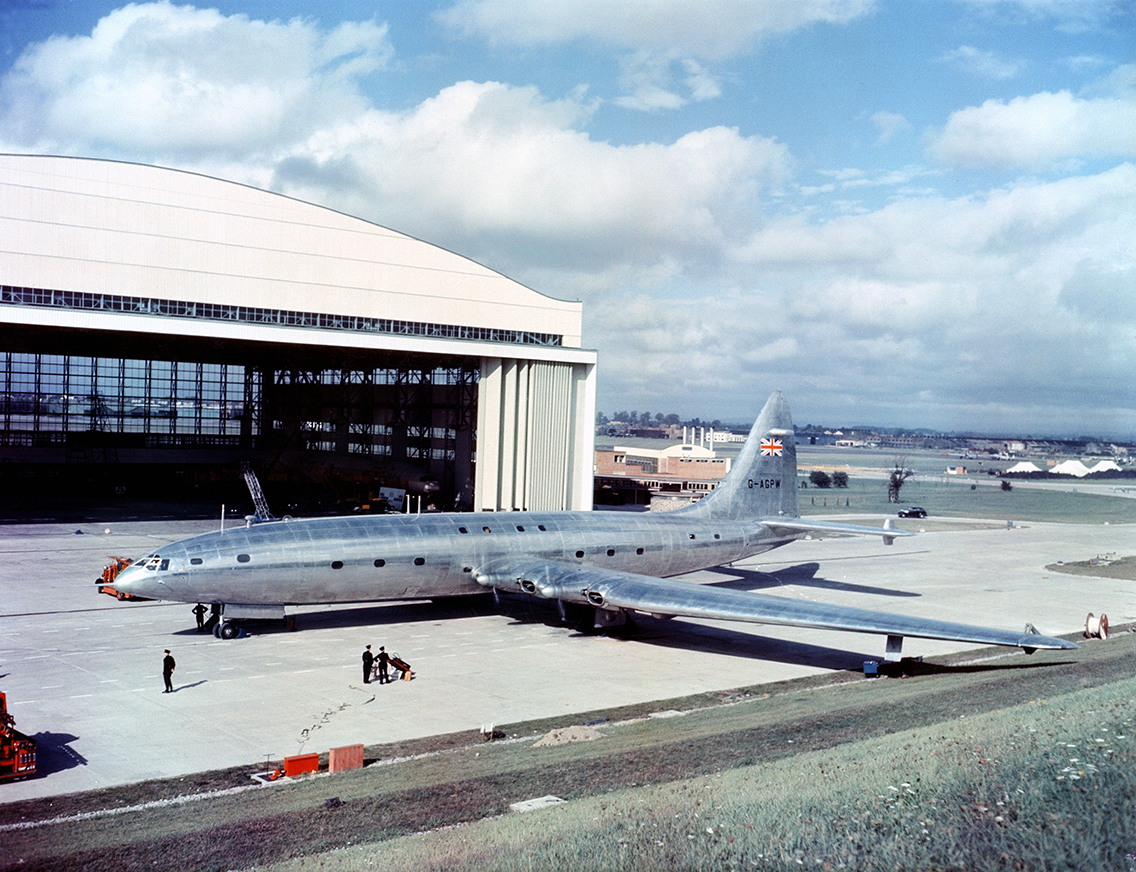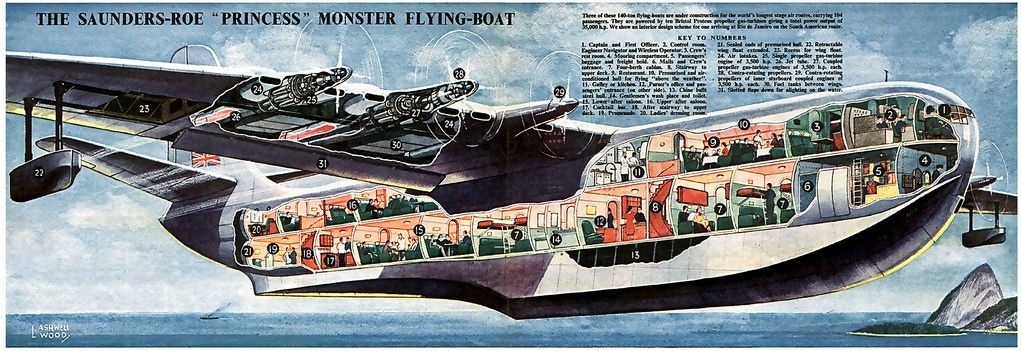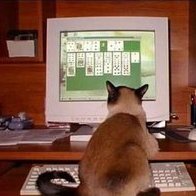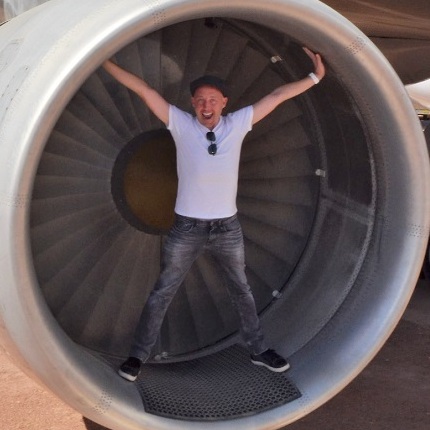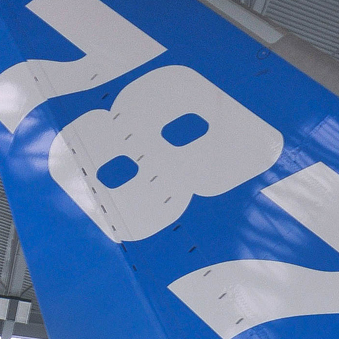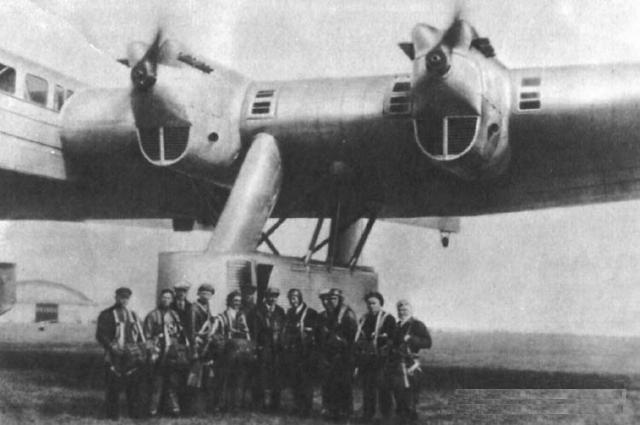I thought I'd start this thread for all those curious about the alluring giants that failed through history. This forum is filled with tit-bits through out countless historical threads. But some things are worth revisiting.
Below is my contribution to the topic. The first part is about American giants, and I'll make follow-on posts in the thread about British and French aircraft as I finish them. Hopefully I do their individual historical contexts justice.
Picture courtesy of FlightGlobal:
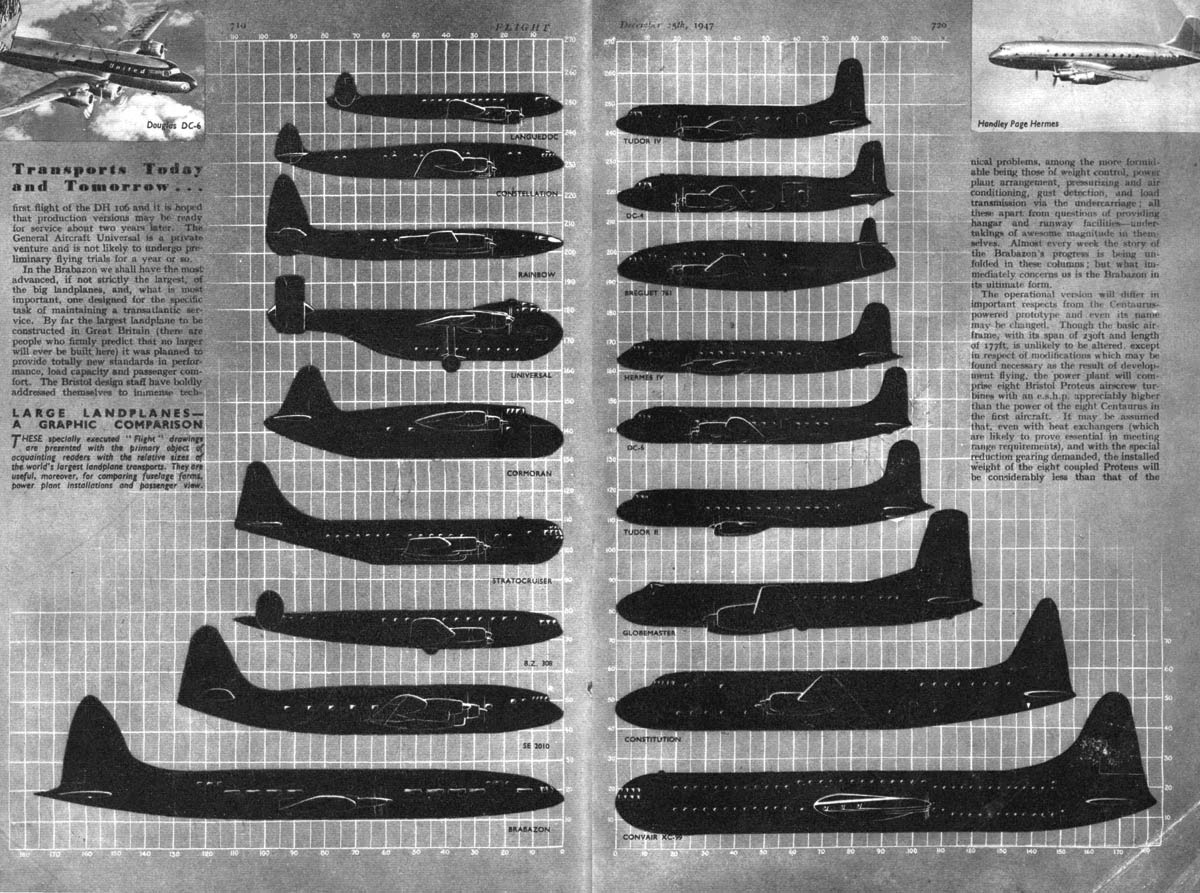
The American Giants
During the inter-war years America quickly established a thriving aircraft manufacturing sector. Though initially reliant on imported aircraft from the likes of massively influential Dutch Fokker; Boeing, Curtiss, Sikorsky (and many, many, more) quickly stood out as increasingly important aircraft manufacturers in their own right. The First World War had shown the need for air power, and the looming second war promised to be won by securing the air. The cottage industry of American manufacturers consequently grew into proper power houses as increasing government contracts for larger and larger aircraft, and a steady growth of national and international air travel, fuelled demand. America was poised to become the preeminent aircraft manufacturer, and primary market, even before WWII began.
Nearing World War II the Boeing 307 and 314 Clipper, Douglas DC-3, and Lockheed Electra were making a great showing against the Europeans. It was also becoming evident that America was likely to be involved in any war that erupted despite its neutrality. And with long distances to American or Asian shores larger aircraft would be needed. It’s frankly hard to fathom how aircraft design went from the “mighty” Douglas DC-4E (a large experimental passenger aircraft, rejected for the smaller eventual DC-4) to the absolutely giant B-36 Peacemaker bomber in less than a decade.
One of the most instrumental airlines pushing for this development in the civilian sphere was Pan American, or Pan Am for short. Director Juan Trippe was a fierce proponent of air travel for the masses and a bit of a visionary. Not afraid to dream big, but not blinded enough to stray from pragmatism either. Together with his competition he cultivated the manufacturing field into a fertile battleground. When one moved, so did the others. Certainly, Pan Am was not alone, but its influence can not be understated. As proven by the fact that this one company would be pivotal in pushing for all of the aircraft listed below.
Consolidated XC-99 / Model 37
Development of the giant XC-99 transport plane began almost in parallel with the famous “father” of the airframe, the Consolidated B-36. Already in 1942 development for the B-36 was far advanced, and that year the Army Air Force ordered a cargo version of it as well. At the time the Army Air Force knew it needed transport aircraft (The Hughes H-4 Hercules was an answer to the same need) and would continue to do so in the future. They also knew such aircraft would need to be gigantic, and structural gigantism is incredibly difficult to engineer for. It would require experience to be gained in building, serving, handling, and keeping such aircraft to be entirely reinvented. Therefore full production of the XC-99 was not guaranteed by the initial order.
The XC-99 transport derivative (then code-named XB-36) was also assumed to be ready much sooner than the bomber. Meaning it could serve as its test bed. It would not have the same strict demands as the bomber, primarily the gargantuan 10,000 mile range requirement, to contend with. It would retain the bombers wing, tail, engines, and landing gear mated to an entirely new fuselage and cockpit. The latter two were not considered as a risk at all by Consolidated apparently, being seen as an “easy” modification.
What resulted was an aircraft that could carry 400 fully equipped troops or 100,000 pounds of cargoes over a distance of 1,720 miles at 292 mph, with a maximum speed of 335mph and maximum height of 30,000 feet. Two decks held a combined 16,000 cubic feet of space. If it was flown with a minimal payload of 10,000 pounds the range was an enormous 8,100 miles.
Picture courtesy of Wikimedia:

Pan Am proved to be very interested even during the ongoing war. With the right aircraft, the right economy, and the right traffic rights it would be able to compete with ocean liners. Though it should be remembered that this mode of transport would be the primary one even for the elite up until the 60s. Seeing the XC-99s potential director Juan Trippe made an order for 15 with options for 3 more “Super Clippers” to be produced come wars end.
Pan Am’s contract stipulated that it should be capable of lifting 204 passengers and 15,300 pounds of bagage and freight. Propulsion was specified to be turboprops, development of which had already started by the time of Germanys fall in 1945 in Britain. It wasn’t going to be a tourist class aircraft. Interiors were to be made up of a mixture of day seats, sleeper berths, and lounges with proper galleys for a full first class experience. An interesting note is that Pan Am also asked that a flying boat derivative be studied, but the draggy hull design impacted range, though it improved carry capacity. Though my source doesn’t list the original range expected of the land variant, the flying boat would have had a range of 4,200 miles at 25,000 feet and 332 mph. The conventional plane would have been 10 mph faster, longer ranged, and with a higher service ceiling.
Now this was not just a paper plane. While no passenger version was eventually built for Pan Am, full mockups of fuselage sections with interiors were produced for Pan Am by Convair (the new name of Consolidated as it had combined with Vultee during the war). These interiors weren’t entirely unlike what would be seen in the Boeing B-377 Stratocruiser, only at a grander scale.
Picture courtesy of James Vaughn on Flickr.com:

The sources I have at hand don’t discuss why the project fell through. But I can speculate. I suggest that the lack of turboprops were the main failing of the project. Aside from Germany and Britain the United States didn’t yet have jet technology at wars end. And even if jets were quickly licensed from the brits, these weren’t yet powerful or economical enough to supplant the tried and true piston-engine.
It’s also evident that the world wasn’t ready for gigantic aircraft. Only a few runways would have been able to take the aircraft in the beginning. And its doubtful that its primary transatlantic route would have been politically possible using the Model 37. At the wars end the precursor to ICAO was created, which heavily regulated ticket prices, passenger numbers, and flight routes airlines from different nationalities could use. Besides which it was evident that the luxury aircraft of the pre-war era were not going to be what was asked for in the post-war one.
Source is mainly volume 24 on the Peacemaker by Dennis R. Jenkins in the WARBIRDTECH series of books.
Lockheed R6V Constitution
Where the Consolidated Model 37 sprung from a military design on Pan Am’s behest, the Lockheed Constitution made the opposite journey. Being a product of Pan Am’s request for study of a new long range airliner in 1942, the concept for which also became picked up by the navy for its transport requirements. In fact the maximum capacity asked for was the same as for the Model 37 – 204 passengers. But 51 seated and 58 passengers in sleeper berths for 109 passengers would be its standard arrangement.
Development was slow however. Lockheed was busy churning out military aircraft for the war. Though the Navy ordered prototypes in 1943 the entire project was of a decidedly low priority. First flight wasn’t achieved until 1946, at which point Pan Am had dropped the Constitution in favour of the Boeing B-377. A smaller aircraft, more quickly available, and using mostly proven technology from the C-97 transport derivative of the mighty B-29/B-50 series of bombers. The B-377 entered service only two months after the prototype Constitution rolled out of the factory.
Picture courtesy of Wikimedia:

Lockheeds resulting aircraft was a highly slender and graceful design with a pronounced “double-bubble” fuselage for two decks with mid-mounted wings in between them. Initially it carried four R-4360 piston engines, but in development Wright “Typhoon” turboprops were proposed. Pan Am proved happy with the B-377 as it was however.
But it proved a formidable aircraft. It could cruise at 269mph with a service ceiling of 27,500 feet with a maximum range and fuel load of 6,300 miles at 238 mph. The two built examples served with the Navy in different roles until they were scrapped.
And that’s as much as I know of the aircraft. Why wasn’t it a success? Again I can only speculate. Perhaps it turned out that it was more expensive to buy and operate than more of smaller aircraft like the Lockheed Constellation. Aircraft in wider use, with plenty of spare parts and service already. Perhaps the ICAO restrictions made them tricky to make profitable? My own guess is that with no military orders the few airframes that could be sold to civilian hands simply became too expensive on a per-unit basis. Lockheed certainly wouldn’t produce them at a loss. This same logic can be seen in another project. The Douglas C-74 below. And again, perhaps Pan Am simply realised that the time was not yet ready for such large aircraft in the post-war environment.
Source is mainly Naval Fighters number 83 written by Steve Ginter.
Douglas C-74 Globemaster / DC-7
As Japan bombed Pearl Harbor the impetus to get a dedicated cargo aircraft to span vast distances became acute. The Army Air Corps contracted Douglas to meet their requirement in 1942 and development began. The order was initially for some 50 examples plus test frames, though only 14 would eventually be built. Difficulties in getting the right engines and requirements down, and a slide in priority downwards, meant delays. The first example wouldn’t roll out of the hangar until 1945. Though a three year production time is nothing to sneeze at.
Picture courtesy of Wikimedia showing the initial bug-eyed canopy:

For a brief moment it was the largest aircraft in the world, with a carrying capacity of 125 passengers or outsized cargoes. Four P&W R-4360 piston engines carried it aloft to a cruising speed of 212mph and a service ceiling of 21,300 feet. Range would be about 3,400 miles. None of the 14 produced ever received pressurisation, but the airframe was designed to accommodate it. Douglas had its eyes firmly set on a dual civilian and military purpose from the very start. An early design quirk that soon gave way was the interesting “bug-eye” canopies for pilot and co-pilot. While visually interesting, dare I say appealing, it was deplored by air crew. Though giving great visibility it hindered communication in the cockpit. The solution was far less aesthetic. Looking like a poorly integrated and slab sided glass shed stuck on top. Though it made air crews happier.
Picture courtesy of Wikimedia, showing the cockpit “shed” as I call it:

Pan Am, ever watchful for new giant aircraft in the period it seemed, approached Douglas already in 1942, but made a conditional contract only in 1944 for 26 civilian versions of the C-74 dubbed DC-7. They specified a passenger capacity of 108 split into two compartments with an eye towards a non-stop luxury South American service from all the major cities in the US.
However the end of the war gave Pan Am, and other airliners who had showed interest, pause. It became obvious that the sort of luxury travel envisioned for the pre-war era wasn’t the way of the future. Pan Am went with the smaller, yet still gigantic, Boeing B-377 in its stead. A decision helped markedly by the fact that per-unit price rose dramatically as the Army Air Corp dropped their orders. The plane flew too late to take part in the war effort. Korea was still not a pressing an issue, and Douglas had gained enough experience with the C-74 to develop a true military cargo plane in its stead. The C-124 Globemaster II that was better suited for the job regardless. Douglas focused on improving the DC-6 in its stead, producing the DC-7 as competition for the Super Constellations offered by Lockheed.
Sources mainly Air Force Legends number 206 written by Earl Berlin and Airliner Tech volume 4 written by Harry Gann.


